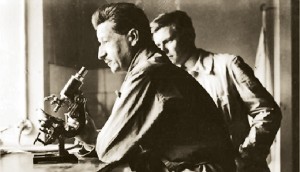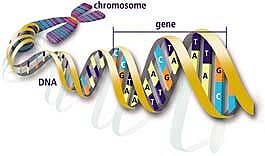D5 Introduction to Evidence Collection

Forensic History – Locard’s exchange principle
 Dr. Edmond Locard (1877–1966) was a pioneer in forensic science who became known as the Sherlock Homes of France where he was the director of the very first crime laboratory in existence, located in Lyon. He formulated the basic principle of forensic science: “Every contact leaves a trace”. This became known as Locard’s exchange principle.
Dr. Edmond Locard (1877–1966) was a pioneer in forensic science who became known as the Sherlock Homes of France where he was the director of the very first crime laboratory in existence, located in Lyon. He formulated the basic principle of forensic science: “Every contact leaves a trace”. This became known as Locard’s exchange principle.
Essentially Locard’s principle is applied to crime scenes in which the perpetrator(s) of a crime comes into contact with the scene, so the perpetrator(s) will both bring something into the scene and leave with something from the scene. Every contact leaves a trace.
“Wherever he steps, whatever he touches, whatever he leaves, even unconsciously, will serve as a silent witness against him. Not only his fingerprints or his footprints, but his hair, the fibres from his clothes, the glass he breaks, the tool mark he leaves, the paint he scratches, the blood or semen he deposits or collects. All of these and more, bear mute witness against him. This is evidence that does not forget. It is not confused by the excitement of the moment. It is not absent because human witnesses are. It is factual evidence. Physical evidence cannot be wrong, it cannot perjure itself, it cannot be wholly absent. Only human failure to find it, study and understand I, can diminish its value.”
The objective of forensic evidence is to prove or exclude a physical connection between individuals and objects or places. Such evidence comprises a wide variety of substances or objects, the analysis of which requires specific, often specialised scientific skills.
The close encounter of perpetrator, patient and crime scene may result in an interchange of traces of evidence (Locard’s principle). Biological traces (i.e. hair, blood, semen, skin fragments) may be found on both the patient and perpetrator; for instance, the perpetrator’s blood could get onto the patient’s clothing.
On the basis of the facts available and information provided by the victim and investigators, the police officer must decide which samples to collect from the crime scene. When faced with such decisions, it is important to be mindful of what purpose the sample will serve, what link is potentially going to be established and whether such a link may assist the investigation of the case.
Important points to keep in mind when conducting an investigation with a view to obtaining forensic evidence are:
- It takes time to conduct a thorough forensic examination; the examination usually involves a “top-to-toe” inspection of the crime scene.
- Detailed documentation is required; information so recorded may be used in criminal proceedings.
- The chain of custody of evidence must be documented.
- Opportunities for follow-up investigation of the crime scene may not arise; it is thus vital to make full use of the first opportunity to examine a crime scene. Collect as much evidence as possible, even if you need to make use of more than one kit.
There is a wide range of samples that could be collected in order to assist the criminal investigation process. It is essential that investigating officers have a clear understanding of the capabilities and requirements of the Forensic Science Laboratory. The available evidence collection kits will lead the investigating officer through the process.
What is DNA
It’s hard to believe that DNA evidence has come so far so fast. The techniques that make it possible to identify a suspect using his or her unique genetic blueprint have only been around since 1985. That’s when Alec Jeffreys and his colleagues in England first demonstrated the use of DNA in a criminal investigation. Since then, DNA evidence has played a bigger and bigger role in many nations’ criminal justice systems. It has been used to prove that suspects were involved in crimes and to free people who were wrongly convicted.
At the heart of DNA evidence is the biological molecule itself, which serves as an instruction manual and blueprint for everything in your body. A DNA molecule is a long, twisting chain known as a double helix. DNA looks pretty complex, but it’s really made of only four nucleotides:
- Adenine
- Cytosine
- Guanine
- Thymine
These nucleotides exist as base pairs that link together like the rungs in a ladder. Adenine and thymine always bond together as a pair, and cytosine and guanine bond together as a pair. While the majority of DNA doesn’t differ from human to human, some 3 million base pairs of DNA (about 0.10 percent of your entire genome) vary from person to person.
In human cells, DNA is tightly wrapped into 23 pairs of chromosomes. One member of each chromosomal pair comes from your mother, and the other comes from your father. In other words, your DNA is a combination of your mother’s and your father’s DNA. Unless you have an identical twin, your DNA is unique to you.
This is what makes DNA evidence so valuable in investigations — it’s almost impossible for someone else to have DNA that is identical to yours. But catching a criminal using DNA evidence is not quite as easy as “TV shows” makes it seem. Our first step in exploring DNA evidence is the crime scene — and the biological evidence gathered there by detectives.
Sources of DNA
 |
Blood is an excellent source of human DNA. DNA is present in white blood cells of humans, but not red blood cells which lack nuclei. A dime-sized spot of blood, approximately 50 µl in volume, is enough DNA for a typical VNTR analysis. |
 |
DNA from sperm heads is usually the most important source of DNA evidence for sexual assault cases. Five µl of semen contains approximately the same amount of DNA as 50 µl of blood. Special extraction methods are required to release DNA from sperm heads. Consequently sexual assault samples can be differentially extracted. The first extraction yields primarily DNA from epithelial cells of the victim, and the second extraction yields primarily semen DNA. |
 |
Saliva contains cellular material. DNA can be extracted from bite marks, cigarette butts, postage stamps on envelopes, and envelope flaps for DNA analysis. |
 |
The hair follicle at the base of human hairs contains cellular material rich in DNA. In order to be used for DNA analysis, the hair must have been pulled from the body — hairs that have been broken off do not contain DNA. |
 |
Any body tissue that has not been degraded is a potential source of DNA. |
 |
Bone is one of the best sources of DNA from decomposed human remains. Even after the flesh is decomposed, DNA can often be obtained from demineralized bone. |
 |
Like bones, teeth can also be an excellent source of DNA, long after the rest of the body has decomposed. |
 |
Urine itself does not contain DNA, but it may contain epithelial cells, which do contain DNA. Most healthy individuals, however, do not excrete epithelial cells in their urine. |
Collecting DNA Evidence
For many years, fingerprints were the gold standard for linking suspects to a crime scene. Today, the standard is DNA evidence because DNA can be collected from virtually anywhere. Even a criminal wearing gloves may unwittingly leave behind trace amounts of biological material. It could be a hair, saliva, blood, semen, skin, sweat, mucus or earwax. All it takes is a few cells to obtain enough DNA information to identify a suspect with near certainty.


As a Doctor it is your responsibility to collect forensic evidence from the clothing of a sexually assaulted individual, in the hope that the perpetrator / rapist has left trace evidence of his DNA by way of his semen, saliva, blood or debris from the crime scene.
- There is a Large bag – to collect a large clothing item.
- There is a Medium bag – to collect a medium sized clothing item.
- There is a Small bag – to collect the smaller clothing item.
But please note; you may not put two or more separate items into one bag. (except for items like a pair of shoes or socks).
 For example, do not place a t-shirt and bra into one bag, as possible evidence on the bra for instance may now be contaminated or confusing to the investigation.
For example, do not place a t-shirt and bra into one bag, as possible evidence on the bra for instance may now be contaminated or confusing to the investigation.
Preserving the Integrity of Evidence
This is necessary in order to maintain the legally necessary “chain of evidence’; sometimes called ‘chain of custody’, or ‘chain of possession’.
 The custody of any evidence collection kit and the samples it contains must be accounted for from the moment of collection until the moment it is introduced in court as evidence. The chain of custody of evidence is a record of individuals who have had physical possession of the evidence. Documentation is critical to maintaining the integrity of the chain of custody. Maintaining the chain of custody is vital for any type of evidence. Therefore, anyone who handles evidence items should be identified, the date noted, source of the samples collected indicated as well as stating, the name of attending personnel and the patient. All outside containers should be sealed with an integrity seal.
The custody of any evidence collection kit and the samples it contains must be accounted for from the moment of collection until the moment it is introduced in court as evidence. The chain of custody of evidence is a record of individuals who have had physical possession of the evidence. Documentation is critical to maintaining the integrity of the chain of custody. Maintaining the chain of custody is vital for any type of evidence. Therefore, anyone who handles evidence items should be identified, the date noted, source of the samples collected indicated as well as stating, the name of attending personnel and the patient. All outside containers should be sealed with an integrity seal.
In addition, if laboratory analysis reveals that DNA evidence was contaminated, it may be necessary to identify persons who have handled that evidence. An identifiable person must always have the physical custody of a piece of evidence. In practice, this means that the evidence collector will take charge of a piece of evidence, document its collection, and hand it over to a law enforcement officer or store it in a secure place under lock and key. These transactions, and every succeeding transaction between the collection of the evidence and its appearance in court, should be completely documented chronologically in order to withstand legal challenges to the authenticity of the evidence.
All these are addressed by this kit and the Collection of Forensic DNA Evidence form.
__________________________________________________________________________________
Do not Mix and Match
Each evidence collection kit has a unique set of barcodes and components and must never be mixed and matched.
Please Note:
A small square sticker now shows the kit name: IE DC SWABBING EVIDENCE COLLECTION KIT and the date of kit manufacture 30052013
___END_________________________________________________________________________
